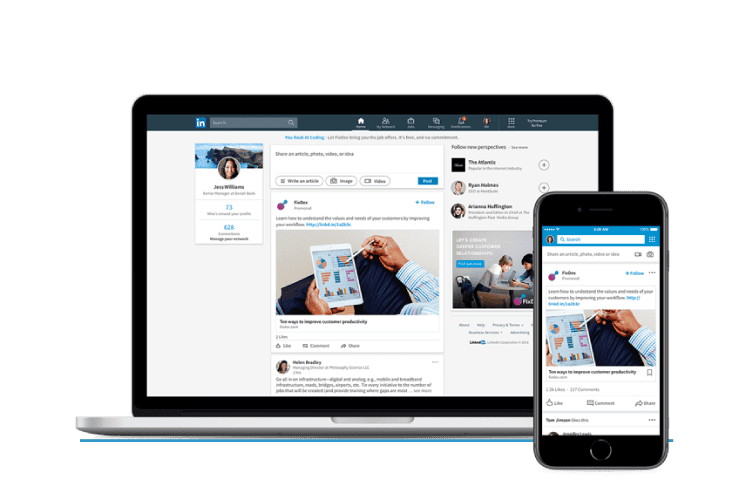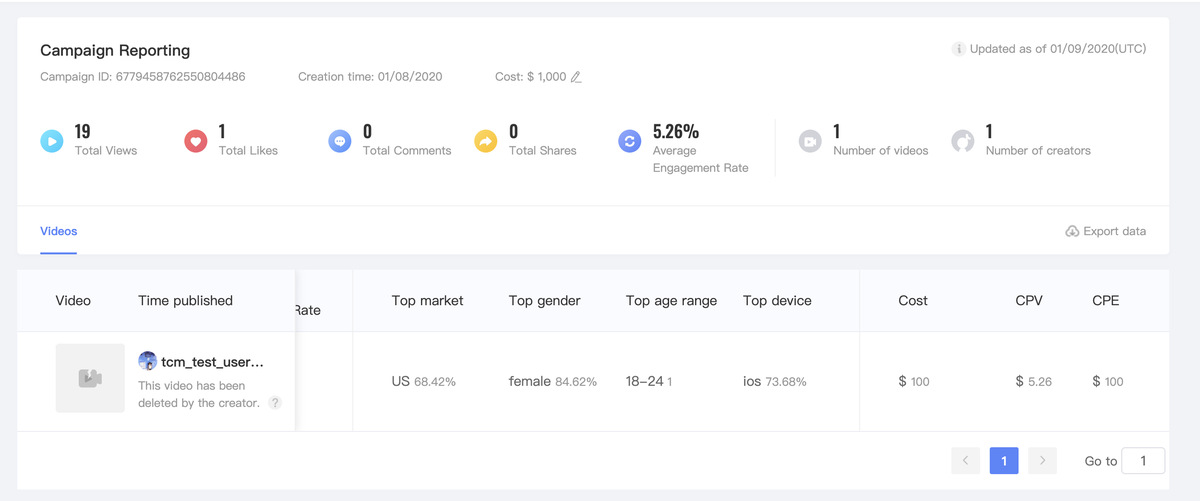Paid social, or social media advertising, is effectively any form of paid advertising taking place on a given social media or networking site.
Social media has become an integral part of many of our lives, and the focus on paid social advertising has shifted to reflect that. While in the past the radio or TV may be your best bet of finding an audience and attracting customers, now you are more likely to find them browsing Facebook, Instagram, Twitter, LinkedIn, or another relevant platform.
That is why paid social ads have become a staple in the modern marketing for businesses of any size – whether you’re a local business looking to find new customers, an ecommerce store wanting to sell more online, or a national company looking to generate more enquiries.

What exactly is paid social media?
Paid social, or social media advertising, is any way in which you pay to display advertisements or sponsored messages to specific audiences of people which aren’t necessarily your followers on that platform. Paid social encompasses all the various ways of advertising or boosting content across social media. There is a huge array of formats and possibilities for what you can do with paid social media advertising.
Examples can be normal pay-per-click advertisements which show a visual ad in the home feed to a user, branded content which is shown to your followers or people who don’t follow you, or even content generated by influencers on your behalf. Usually, these posts are shown differently to normal posts on the platform, and will state if the post or image is an ad with a sponsored or promoted tag.

By contrast, organic social media is any “normal” social media post which is free to post. In other words, no one has spent money on it in order for your audience to see it. This would include most posts you would see on a Twitter feed, Facebook page or LinkedIn page. Usually the only people to see these will be your followers – and only a fraction of these will actually see the post. If you use hashtags, then people who follow these may see the posts. And if our followers engage with a post, then people who follow them may see the post. But essentially, organic social media is only showing content to people who already follow your brand. Paid social helps you reach a much wider audience, as you can choose who to put your posts in front of.
Your typical audience and ideal customer will likely be the deciding factor of where you advertise. Facebook holds the crown as the king of paid social as it stands, with a huge reach across Facebook itself, Instagram and all the other various platforms it owns. You can advertise on Twitter, LinkedIn, Pinterest, TikTok, and many more.
The chosen platform also means the content you need to produce to advertise will be different. Twitter’s focus is more on short-form content which people ll see as they scroll through the latest news and updates. Facebook offers a wide range of content you can promote, whether it’s a static image, a carousel of images, videos or various other more engaging formats. Instagram is heavily visual, with a focus on images which capture the attention of users. LinkedIn has a heavy focus on B2B, and so the content would usually reflect this key difference.
There’s also ways for people to shop directly on the platforms themselves – giving you an option to sell your products directly or indirectly through a platform such as Facebook.
You will need to think long and hard about what your general business objectives are, how digital marketing in general can help, and how paid social fits into this strategy. After deciding that, you can consider which platforms are best for your scenario, and then decide on a specific sub-audience. Though, of course, you can target multiple target audiences on any single social network – and there’s nothing to stop you advertising on multiple social media platforms at once. But it’s often worth tailoring your campaigns and advertising collateral for each channel in order to ensure its effectiveness, rather than creating more general ads which are not tailored to the users on each platform, and the audience you wish to target.
Most paid social advertising platforms use a bidding system, similar to Google Ads PPC (pay-per-click) models. Advertisers bid on ads based on your audience, and you will enter a bidding war to display your ads to your audience. Depending on your product/service offering and industry, costs will differ. But it’s unlikely to be unaffordable if your competitors are advertising – and if they are, then you can be sure it is working for your competitors, and they are reaping the benefits of paid social. If they are doing it, then so should you.
Benefits of Paid Social – why you should consider social media advertising
The main selling point of paid social is that you can reach new audiences – not just people who already follow you. Unlike Search ads, you are also finding potential customers which aren’t actively searching for you. While the intent is different, it’s an untapped audience that perhaps are not aware your brand, product or service exists – let alone the fact they want or need it. If they weren’t aware of you or what you offer, how would they know to search for you? How do you stand out in an ocean of online content and competitors? With paid social media ads cutting through the competition.
Online advertising is one of the quickest routes to reach new customers or clients, and paid social is no exception. After creating a campaign and it gets approved, you can be getting your message in front of your desired target audience.
Organic social is increasingly difficult to utilise in order to reach customers, followers and generate anything in the way of results. Of course, this is in the interest of the big social media companies as it means more businesses need to invest in paid advertising. But it is simply not enough to rely on organic social media these days, as even your most devout followers are not likely to see all of your posts on certain platforms due to the various algorithms at play. Facebook has significantly decreased how often brand’s posts are displayed in a user’s feed organically – so it’s become a pay to play game.
The biggest advantage of paid social ads is the audience targeting. The way in which you can target campaigns or specific ads to certain audiences or groups of people is what makes paid social such a powerful channel to build your business. Whether it’s based on demographics, age, location, behaviour, job titles, or the many other attributes that social platforms have stored, you can target your ads to your ideal audience.
Equally, with the Facebook pixel and other tools that social media networks provide, you can target potential customers who have visited your site, or specific pages, which may show they are interested in what you have to offer. In doing so, it offers you an opportunity to reengage lost customers by advertising to them and reminding them to return to your site to carry on with what they had previously been up to. Similarly, with ecommerce, someone may have been browsing particular products and not make the purchase. But maybe when they see your ad showing the same products they were looking at hours or days before, they may be intrigued enough to complete the purchase.
Most forms of paid social campaigns work on a PPC model – so you only pay when someone clicks on your ad. This means you are only spending money when someone is interested in what it is you are advertising. Of course, not all of this traffic will convert into business, but unlike traditional advertising methods, you aren’t paying to advertise to people who are uninterested entirely.
Paid social also offers a very simple way to track your return on investment. Most platforms can show you directly how much you have spent on advertising, and the results it has generated. If you are selling products online, it is very simple to have this all linked up so it shows you exactly how much people have spent on your site or elsewhere after interacting with your adverts.

Of course, there’s never benefits without the cons. Advertising on social media can be expensive for some brands who don’t have the stomach for it – especially on a platform such as LinkedIn. While costly, it is more expensive for a reason, and that is because you can target B2B campaigns to people with the exact job roles and seniority you require. Therefore those brands which succeed see the value in it. It’s only worth what people will pay.
Paid social also often has a lower click-through rate than other forms of advertising, but as previously discussed, the fact that most campaign formats work on a PPC basis means you don’t pay for people who don’t click your ad. While when someone is Googling for a product/service like yours with the intent to purchase/enquire/research is quite strong, paid social ads are being displayed as someone is doom-scrolling through an endless feed of articles, baby photos and memes. Your ad is breaking this pattern, so it has to be particularly enticing in order to keep people away from the other high quality content often found on social media.
Should I invest in paid social?
There are very few businesses than could not benefit from paid social advertising in some capacity. You do not have to be spending millions or thousands in order to showcase your business on Facebook, Twitter, LinkedIn or otherwise.
Paid social has opened up advertising as a viable form of digital marketing for even the smallest businesses. You can spend as little as you want and scale it upwards in-line with the results you are achieving. And if it doesn’t work for you, you can turn it off and you will instantly stop spending money.
If you already run Google Ads or any form of search ads, you will be familiar with the concept, and if you have seen success there then paid social could be the next step forward.
While producing content for social media channels might seem daunting, it is very much worth the time and investment to get right. A successful campaign can make a huge difference to your business, which will only improve and get optimised over time.
If you are considering getting started with paid social, or want an expert eye over your current paid social campaigns, get in touch with the team at Xanthos for a chat to see what could be done differently and how we can help.

